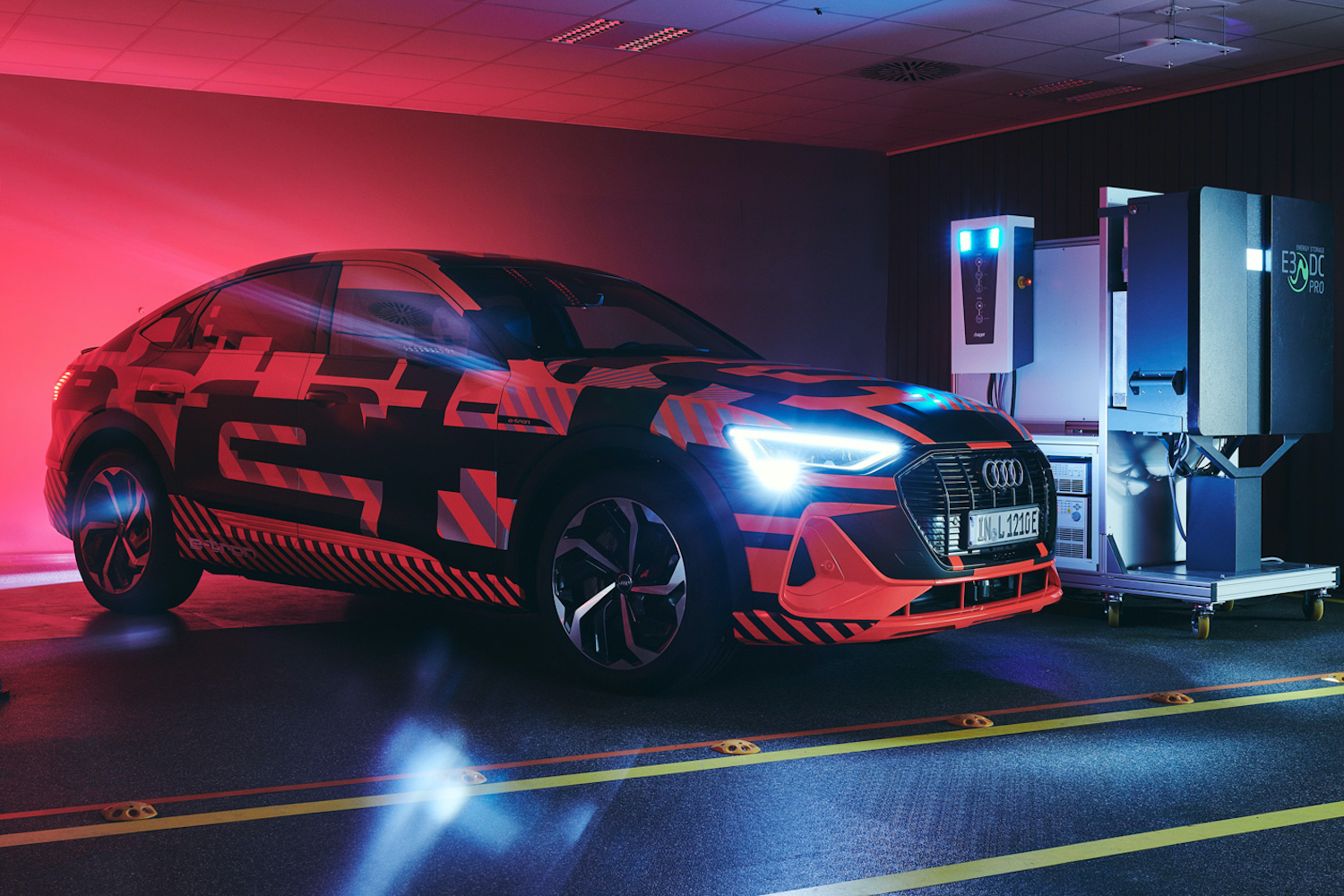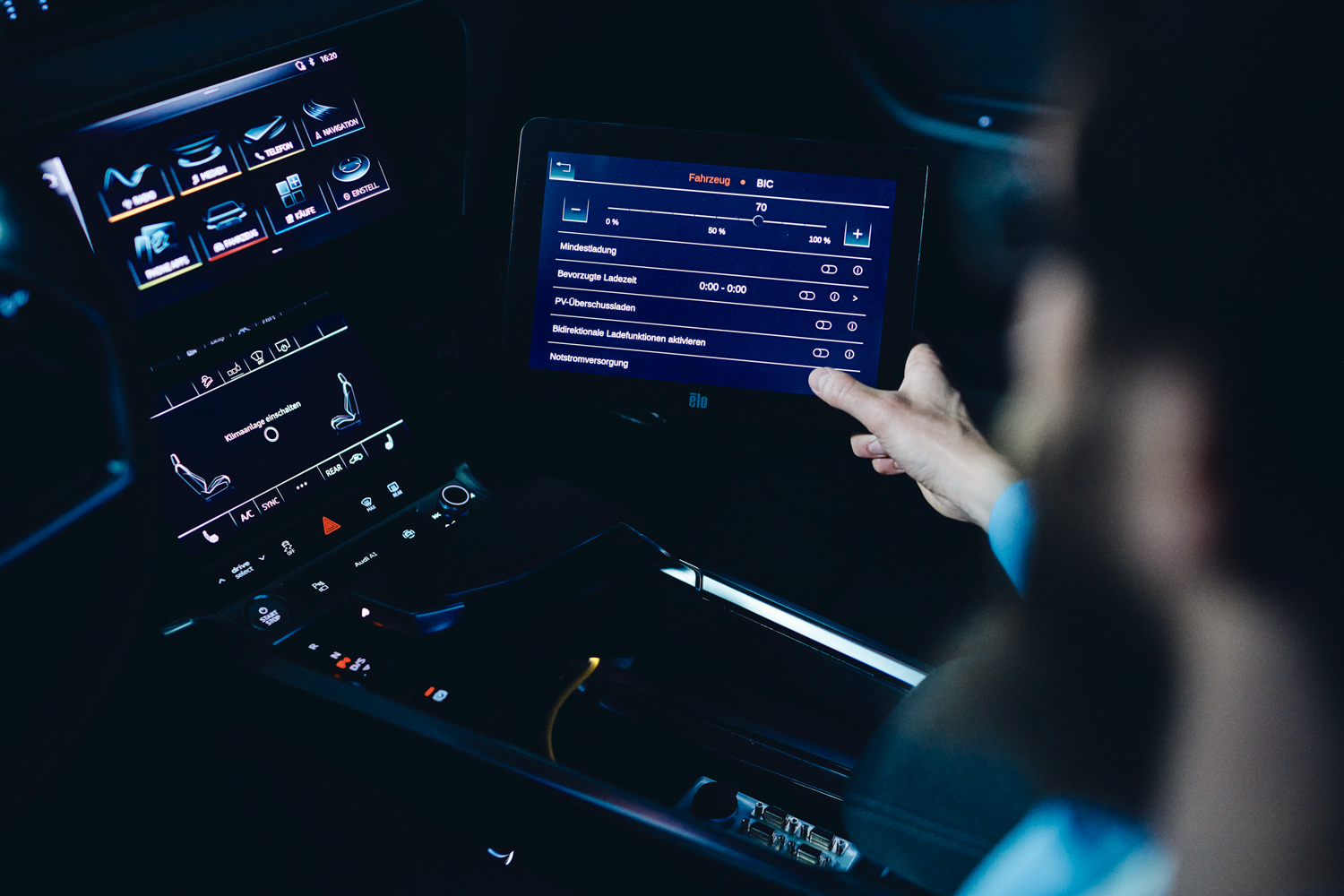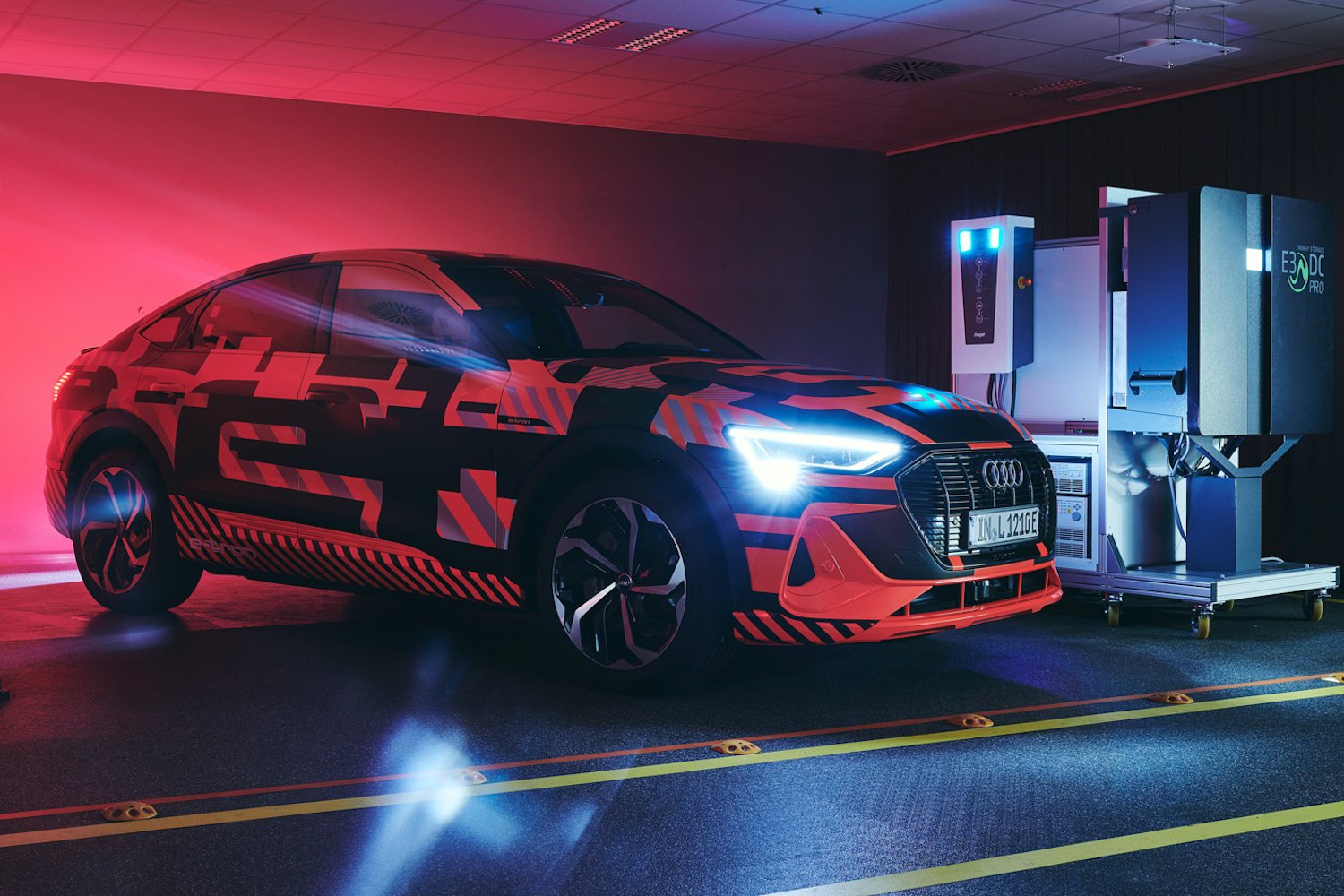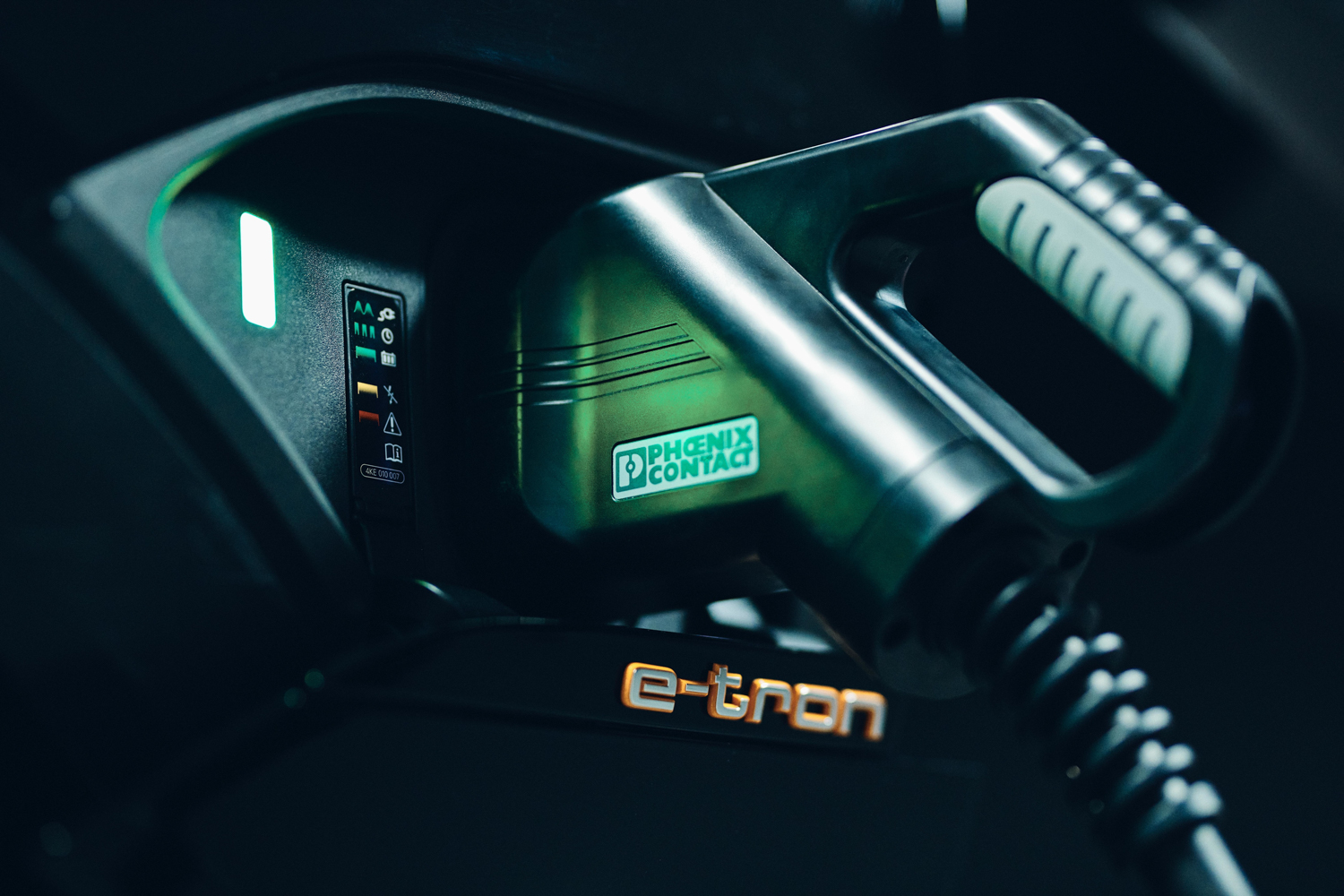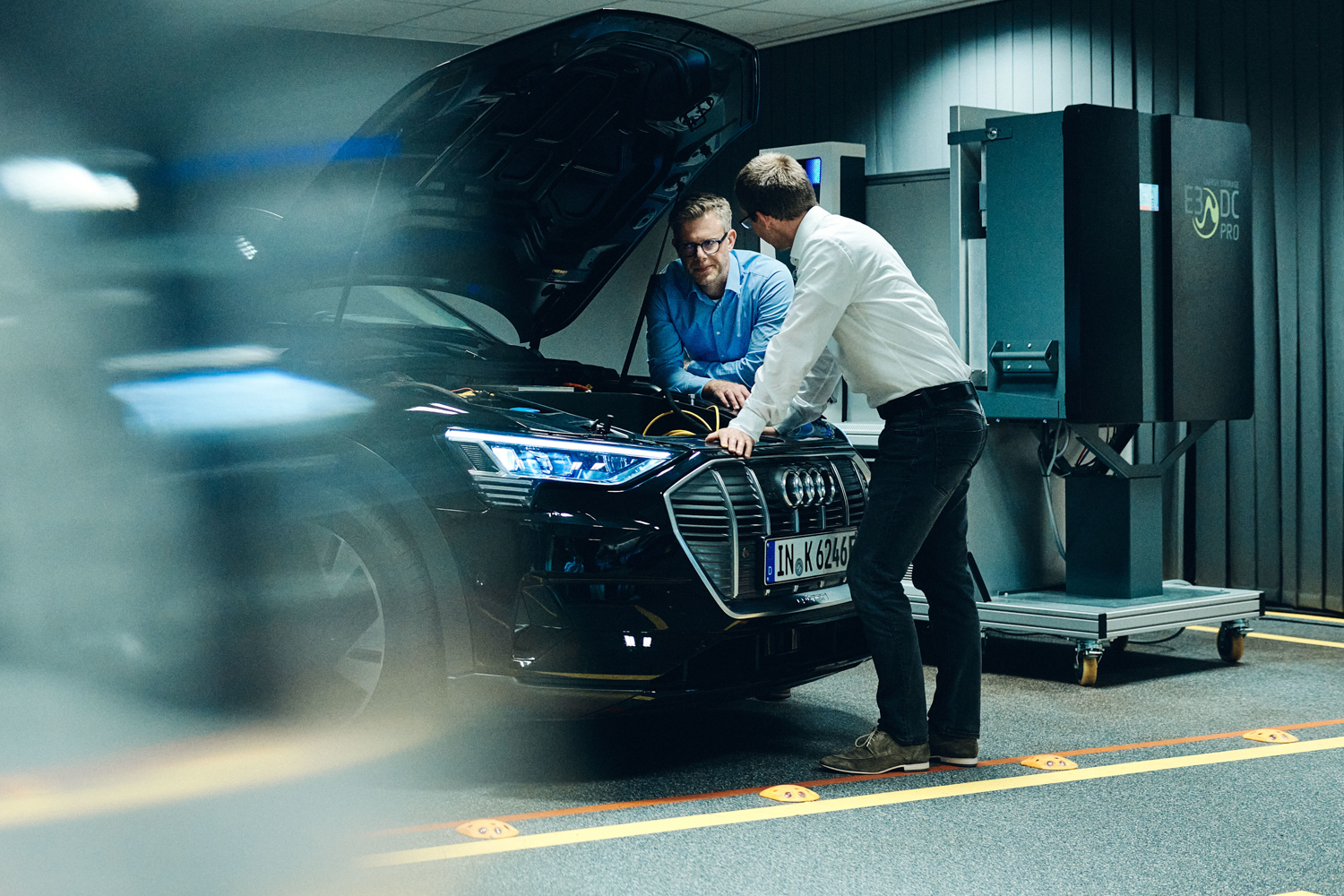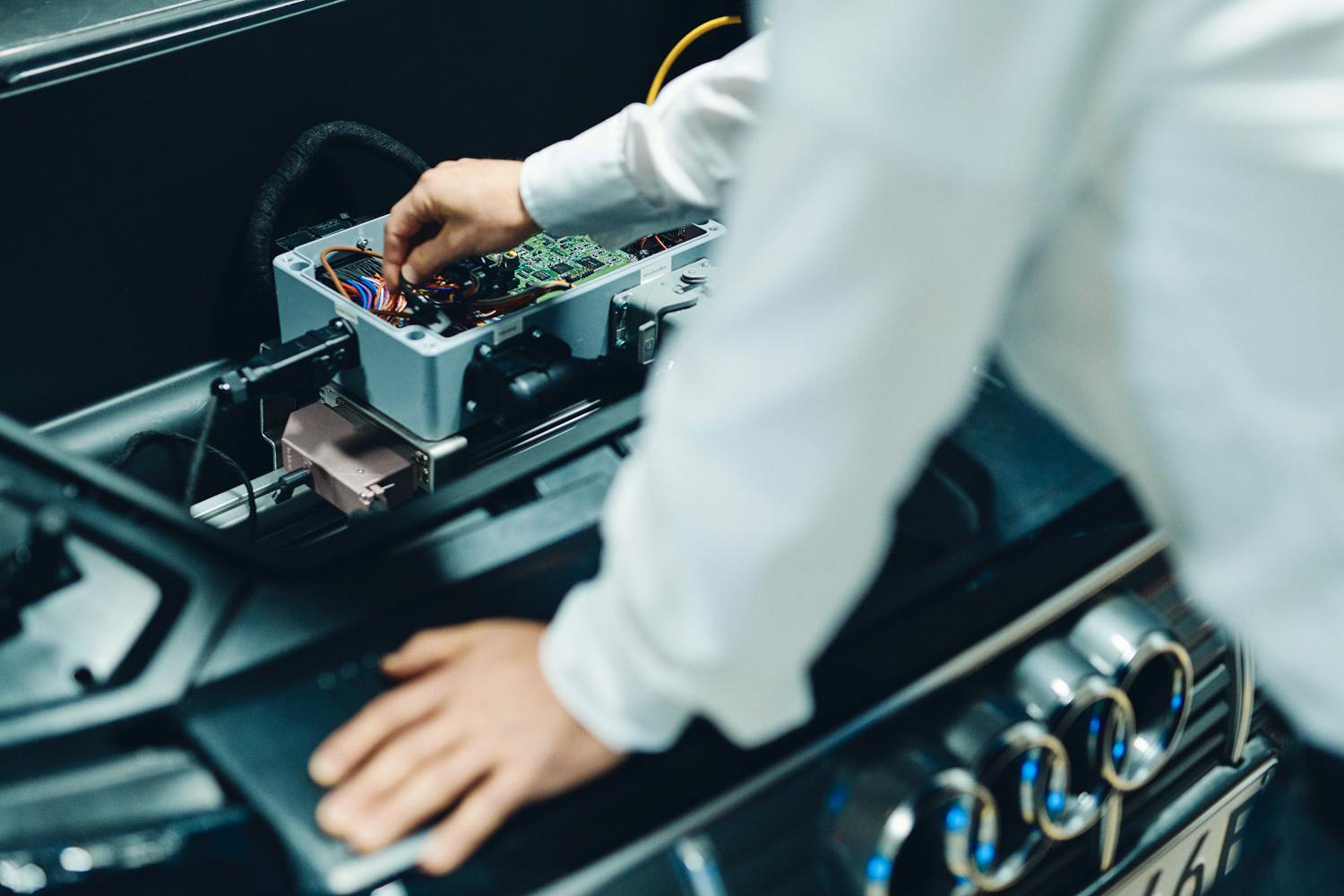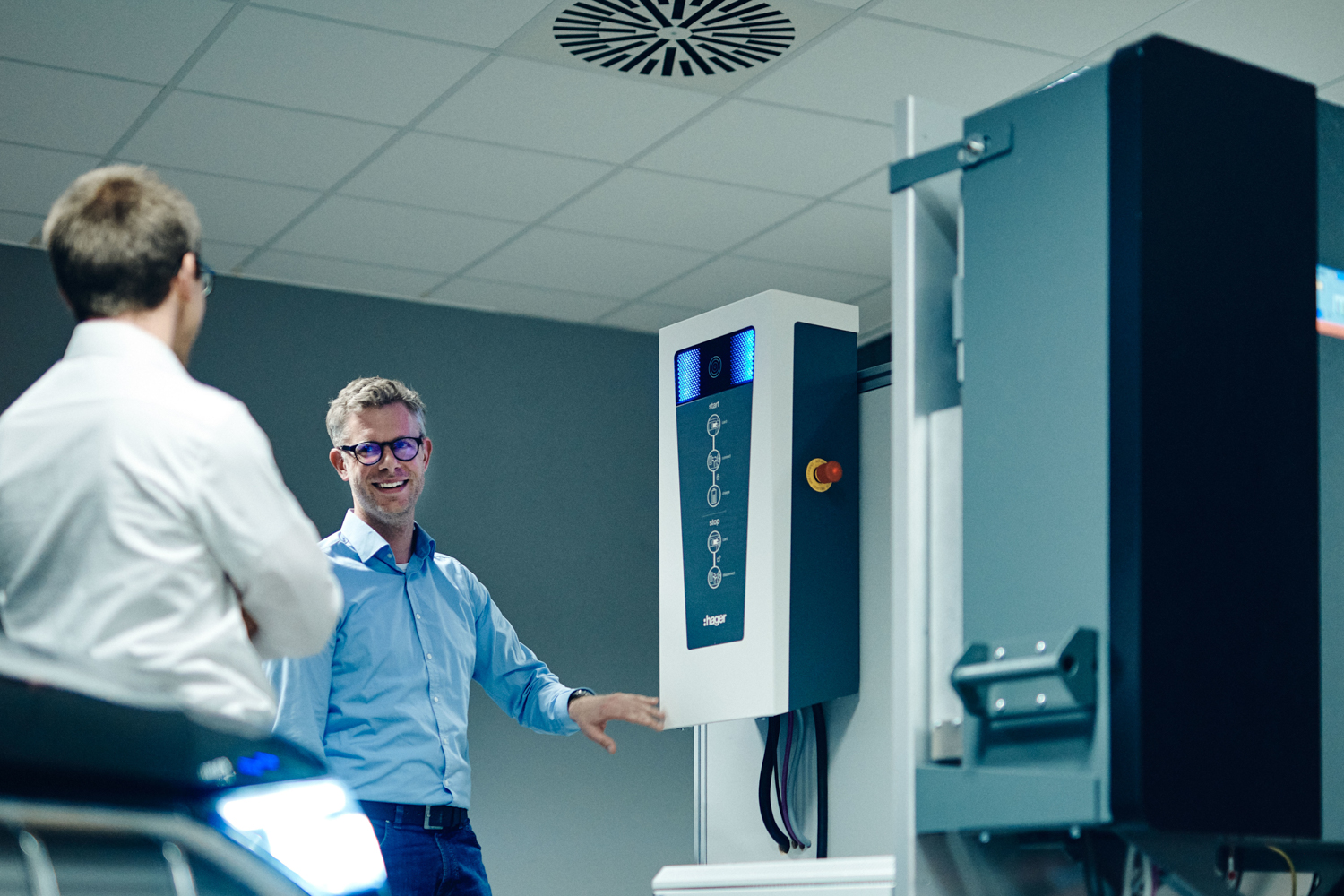Audi says that it is researching the use of bi-directional chargers for electric cars, which would allow excess battery capacity to be sent to the national grid at times of peak demand.
Make the car part of the network
Audi is working with the Hager Group to develop what would effectively be a two-way charging system that can either charge up your electric car (obviously) or, when there's peak demand on the electricity network, draw on the spare power in your car's battery.
The idea is seen, in particular, as a major boost to renewable energy generation. Basically, when it's sunny or windy (or both) then the power from solar panels and wind turbines flows into the grid, but has to be used there and then, or it's wasted. By using electric cars as energy stores, that excess energy from renewables could be stored, rather than wasted.
"Electric mobility is bringing the automotive industry and the energy sector closer together. The battery of an Audi e-tron could supply a single-family home with energy for around one week independently. Looking ahead, we want to make this potential accessible and make the electric car part of the energy transition as an energy storage device on four wheels," says Martin Dehm, technical project manager for bidirectional charging at Audi.
Storage for solar power
It's not just that the power would be sent blindly into the grid, either. In theory, your car could be used to power your own house. Audi's vision is home chargers supplied, in part, by solar panels on your roof. On a sunny day, those panels could charge up your car with (effectively) free, zero-emission electricity. On a cloudy day, when your car is connected, it could supply bursts of extra power to your house, say when you're cooking dinner. That would reduce your own electricity bill, and the car could fully charge later, say at a cheaper night rate, saving you further cash. The car could also, potentially, supply your house with power in the event of a power cut.
"Using the battery of electric vehicles to contribute to climate protection while lowering electricity costs at the same time is a vision that we have found fascinating since the very beginning. And we have found an ideal partner in Audi," explains Ulrich Reiner, project manager at Hager Group.
Simple in theory
It all sounds very simple in theory, but it's actually much more difficult in practice, hence the research programme. An Audi e-tron with prototype charging technology was used in the research project. In the test grid, the fully electric Audi model operated with a DC wall box, which enables a charging capacity of up to 12kW, and a flexibly extendable home storage unit (basically a big battery stuck to your wall) with a capacity of 9kWh (which isn't necessarily needed, but is a handy extra addition). Thanks to the DC voltage level in the overall grid, the connection between the solar panel system and the vehicle does not require an inverter and is thus a particularly efficient solution.
The idea is to do all of this without compromising the convenience of charging up your car. In other words, Audi wants to make sure it can do all of this without leaving you high and dry when you need to go somewhere. "Maintaining mobility is at the centre of our attention. Customers, therefore, don't need to restrict themselves in order to make bidirectional charging suitable for everyday use," says Dehm. "The intelligent charging management manages the optimum use of the battery, thereby maximising the cost-effectiveness of the overall system. The system is very easy for customers to use - all they have to do is plug in the car, and the rest happens automatically."

